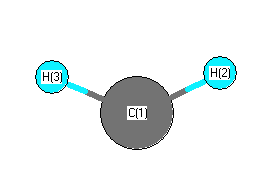.
| squib |
reference |
DOI |
| 1982Sea/Bun:5348 |
Sears, T.J.; Jennings, D.A.; Brown, J.M. "The rotational spectrum and hyperfine structure of the methylene radical CH2 studied by far-infrared laser magnetic resonance spectroscopy." Journal of Chemical Physics. 77, 5348-5362 (1982) |
10.1063/1.443783 |
| 1998Kuc |
K Kuchitsu(ed) "Structure of Free Polyatomic Molecules - Basic Data" Springer, Berlin, 1998 |
10.1007/978-3-642-45748-7 |
| 1999Das/Whi:175 |
Das and Whittenburg. Performance of the hybrid density functionals in the determination of the geometric structure, vibrational frequency and singlet-triplet energy separation of CH2, CHF, CF2, CCl2 and CBr2. J. Mol. Struct. (Theochem). Vol. 492. pgs. 175-186. |
10.1016/S0166-1280(99)00279-1 |
| 2005Rus/Bog:573 |
B Ruscic, JE Boggs, A Burcat, AG Csaszar, J Demaison, R Janoschek, JML Martin, ML Morton, MJ Rossi, JF Stanton, PG Szalay, PR Westmoreland, F Zabel, T Berces "IUPAC Critical Evaluation of Thermochemical Properties of Selected Radicals. Part I" J. Phys. Chem. Ref. Data, Vol. 34, No. 2, 2005, 573 |
10.1063/1.1724828 |
| VEEL5 |
M.E. Jacox, Vibrational and Electronic Energy Levels of Polyatomic Transient Molecules, J. Phys. Chem.Ref. Data, Monograph 3 (1994) (updated data in NIST Chemistry Webbook - http://webbook.nist.gov/chemistry/ |
|
| webbook |
NIST Chemistry Webbook (http://webbook.nist.gov/chemistry) |
10.18434/T4D303 |











